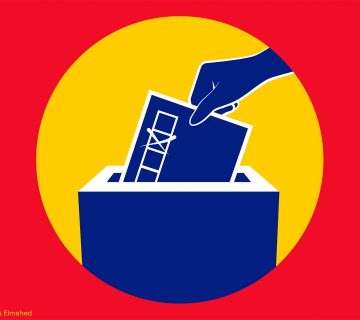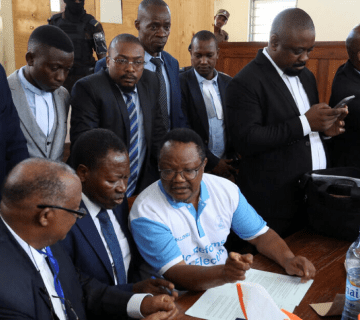Information disorder, a growing phenomenon, is often underestimated despite the possible far-reaching impact it can have on national security. Information disorder refers to the spreading of false or misleading information. It may include but is not limited to disinformation (intentional circulation of false information), mal-information (deliberate use of accurate information to mislead) and misinformation (unintentional circulation of false information). These strategies can be employed by both state and non-state actors to advance their strategic agenda. For instance, state actors like Adolf Hitler institutionalized propaganda through a dedicated Ministry of Public Enlightenment and Propaganda to manipulate public opinion and consolidate power. Similarly, non-state actors such as Islamic State of Iraq and Syria (ISIS) have leveraged modern digital platforms to recruit members, spread extremist ideologies and instill fear.
In Kenya, the use of social media as a common way of acquiring information has been on the rise. According to 2024 data released by Datareportal, Kenya’s social media usage ranked high above the global average of two hours and 30 minutes. This high level of social media engagement, coupled with existing policy gaps on information disorder, makes the country a potential arena for both foreign and local actors to influence public discourse and advance strategic agendas. There is need for the government to address the existing policy gaps and sensitize its public more on identifying false information to avert possible threats to national security.
Impact of Information Disorder on National Security: Historical Precedents
The sinking of the USS Maine ship in 1898, and the consequent misinformation that proceeded afterwards, remains one of the most famous examples of how a single event, amplified by media and public emotion, can precipitate war. In 1898, a USS Maine battle ship that was stationed at the Havana harbor exploded, killing 266 out of the 354 crew-members on board. Shortly after the incident, newspapers owned by William Randolph Hearst (New York Journal) and Joseph Pulitzer (New York World), published sensational headlines that implicated Spain’s involvement in the explosion. The reporting triggered a rallying cry across America’s public with the phrase ‘Remember the Maine, to Hell with Spain!’’ as a popular slogan. Three months later, under heavy pressure from the public, President William McKinley, sought Congress approval to declare war on Spain and intervene militarily in Cuba, which was then a colony of Spain. Although other factors also contributed to the declaration of war, the sensational reporting of the New York Journal and New York World, played a huge role in precipitating the war. An independent investigation would later prove that there was no direct evidence linking the involvement of Spain in the explosion.
The 1954 Central Intelligence Agency (CIA)-backed coup in Guatemala and the 1994 Rwandan Genocide are examples worth highlighting. In 1954, the CIA orchestrated the overthrow of Guatemalan President Jacobo Árbenz using a rebel force of approximately 480 men, achieving their objective in under 10 days with minimal direct combat. The CIA widely employed information disorder characterized by the heavy use of the CIA-controlled propaganda radio station Le voz de liberation. Through the radio station, a primary way of acquiring information then, and a very small bombing campaign, the CIA created the illusion of a large-scale rebellion in progress, spreading fear among the military and giving the impression that the rebel forces were advancing rapidly. This manipulation ultimately contributed to Árbenz’s decision to resign and flee into exile.
The use of the radio as a propaganda tool was equally used during the Rwandan genocide. In the 90’s the internet was not popular and the radio was still a common way of acquiring information. The extremist Hutu regime leveraged on the Radio Télévision Libre des Mille Collines (RTLM), a privately-owned radio station to spread propaganda. RTLM dehumanized Tutsis by calling them “cockroaches,” and spread fear among the public with false claims of Tutsi plots against Hutus. In some cases, RTLM named Tutsi locations and directly incited killings by urging listeners to hunt them down.
Kenya’s Social Media Landscape
As highlighted at the outset, common ways of acquiring information have evolved from newspapers, radios to the television and the social media in the 21st century. As of early 2024, Kenya’s social media penetration rate was approximately 23.5 per cent, meaning about one in four Kenyans actively used social media platforms. Despite the lower penetration rate, Kenya stands out globally for its high daily engagement, with users spending an average of three hours and 43 minutes per day on social media. This figure is one hour and 13 minutes more than the global average of two hours and 30 minutes per day. This heavy use of social media in Kenya makes it a possible target of misinformation and disinformation campaigns by both foreign and local actors. While Kenya has not had a major event caused by large-scale disinformation akin to the incidences described, there have been isolated cases of politically motivated fake news, ethnic incitement, and manipulated narratives during election periods.
The primary legislation addressing information disorder is the Computer Misuse and Cybercrimes Act of 2018. Sections 22 and 23 of the Act prohibits the intentional publication of false, misleading, or fictitious information—especially when intended to appear authentic or likely to incite panic, chaos, or violence. Consequently, the Act prescribes a fine of Ksh five million, a prison term of up to 10 years or both for offenders. A notable gap in the legislation however is that it does not explicitly address misinformation, an omission arguably reasonable, as many individuals share false information unintentionally, and penalizing such actions may be impracticable.
Way Forward for Kenya
As highlighted in the earlier mentioned examples, Kenya can draw valuable lessons from the experiences of aforementioned states which have greatly paid the price for not guarding against the national security threats posed by information disorder. The Government of Kenya therefore needs to ensure that its citizens are equipped with the ability to recognize false and misleading information circulating online. This could be made possible by;
- Training the public in media literacy (especially youth, who are heavy social media users).
- Integrating media literacy, focusing on countering information disorder into high school and university curricula.
- Support fact-checking initiatives and set up a rapid government response system to counter false information.
- Invest in research on combating information disorder.
Through the aforementioned ways, Kenya could guard against the possible threat of disinformation campaigns that may be carried out by foreign and local actors.
Jeremy Oronje is a Research Assistant at the Horn Institute
Photo Credits: The Standard.



